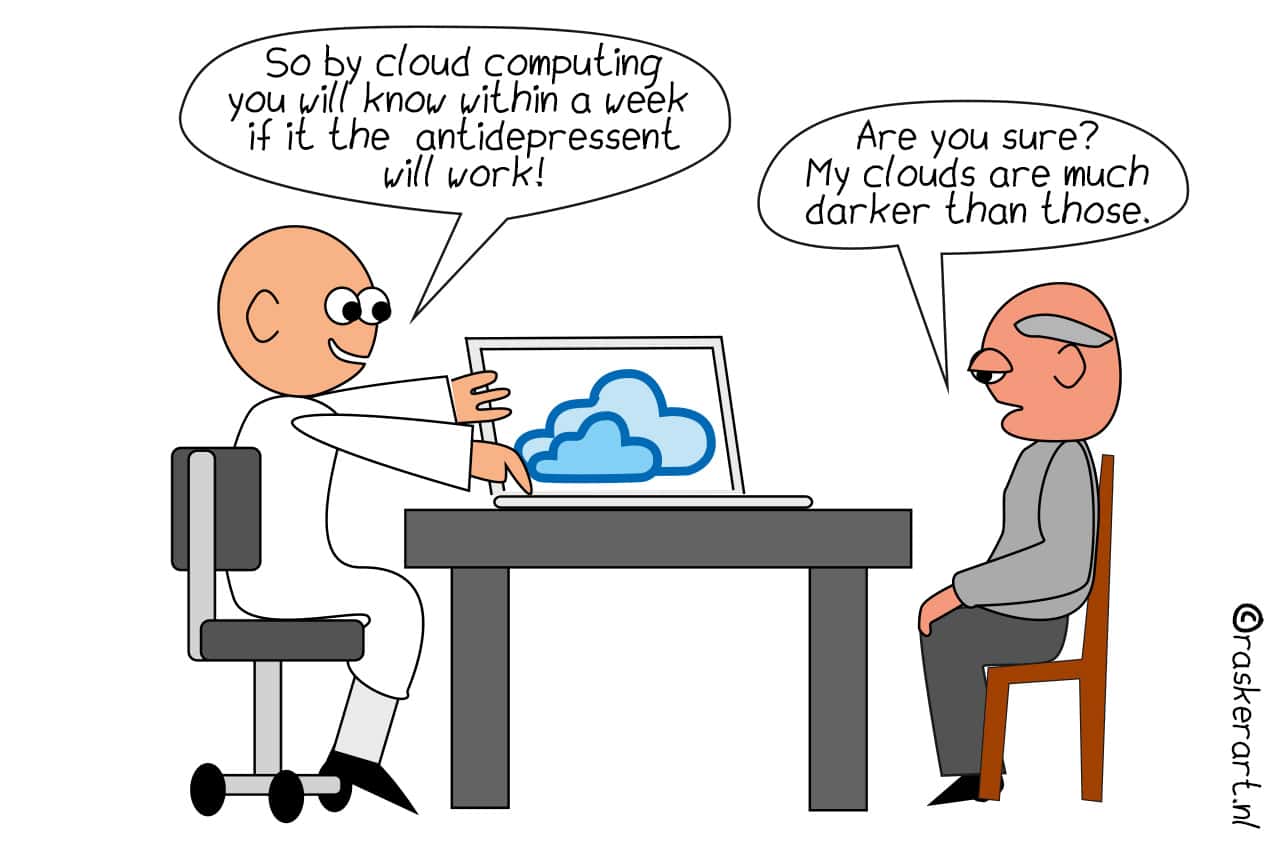
The dubious first anniversary of the corona pandemic is approaching. This wee, exactly one year ago, the thing that had long been dreaded happened in Europe. After a spate of infections spread across the continent, it was Italy where the first large measurable outbreak occurred. Ten, one hundred, one thousand, ten thousand … And it did not stop with Italy.
Last year, the coronavirus reached every corner of Europe in the months of January and February by way of the Swiss and Austrian ski slopes. Measures were barely in place at that time and the carnival celebrations in Roman Catholic countries did the rest. After spreading below the surface for a while, the pandemic became tangible at the end of February. In the Netherlands, the first reported case of corona occurred on February 27. As such, it was one of the last countries in Europe to signal corona.
Meanwhile, we are a full year and more than a million infections down the road. The virus is far from eliminated; on the contrary, most countries still have fairly severe restrictions in place. Yet percentage point by percentage point, vaccination rates are rising that should eventually bring us back to normal.’ Although it must be said that EU countries are not among the global leaders when it comes to rolling out vaccinations. In fact, only the Danes can still be counted among the top 10. Romania and Poland were overtaken this week by Turkey, which, like Chile, is vaccinating at a furious pace.

Making it out of the tunnel with a Green Passport
With nearly 89 shots per 100 inhabitants and a fully-vaccinated percentage of the population standing at 36.4 percent, Israel is still the global leader. The impact of the fastest vaccination campaign in history is significant. The number of infections and hospitalizations already plummeted after the first vaccination round. However, a second shot is needed for full protection.
Starting this week, the Israeli government has even more good news for their residents who have also made it through the second Pfizer round. Israelis who are fully protected against the coronavirus will receive a so-called green passport. Since Monday, events, gyms, cultural institutions and outdoor attractions have reopened to anyone who can show proof of vaccination upon entry. There is a considerable chance that many other countries will follow suit in the final phase of the pandemic.
Even though for the time being Europe can only dream of this scenario, the Greeks and Cypriots have shown interest in the Israeli green passport scheme, which is intended to become mandatory later this year not only for its own population but also for tourists. Iceland and Poland introduced their own national variant this month. While Denmark and Sweden also have concrete plans to introduce a digital vaccination certificate this spring. This should allow crowds to gather in sports stadiums, concert halls and restaurants and make international travel possible once more. It seems to be a matter of time until the rest of the countries follow suit.
How are inoculations coming along in Europe? In terms of pace, the supply problems that played the leading role in this column two weeks ago still seem to prevail. EU countries are steadily stepping up the pace, but are still not able to inoculate at full speed. This is due to supply bottlenecks at pharmaceutical companies. Something that they themselves had largely caused. The map below shows how many shots are administered each day, based on the rolling week average.
It really is a competition
Whatever some politicians may say about due diligence and that this vaccination campaign is absolutely not a competition, it seems that by now, the reality is more than apparent. Countries that are the first to vaccinate a high percentage of their populations will be able to open their gates sooner. EU countries have their work cut out for them if they are to achieve this before summertime. In Denmark and Great Britain, they reckon that they can get the job done before the summer vacations. Others are a little more cautious about this kind of sunny outlook. Still, 2021 should be the year that COVID-19 transforms from a society-disrupting pandemic disease into, at best, an obstructive endemic version.
Will people still become infected? Most likely, yes. But thanks to the vaccines, there will be significantly fewer of them. Moreover, the portion of patients who are unlucky will also develop much milder symptoms. Consequently, full ICUs will no longer be caused by the coronavirus. To reach this point, the world has embarked on the largest vaccination campaign ever. We are now two months into the campaign. An animation of this country race below shows how the number of shots per 100 upper arms is steadily increasing in the first nine weeks of the campaign.
The Dutch catch-up
The fact that not just the pandemic, but also the vaccination campaign seems to resemble a marathon rather than a sprint is proven by the Netherlands, which was still the continental laughingstock last month because of its miserly snail-like pace compared to other countries. After two months of vaccinating, there is little evidence of this. Last weekend, the Netherlands passed the million mark, outpacing its neighboring country, which had cited its northern rivals as an example of how not to go about it.
Over the coming days, Italy, which has been struggling with supply and logistical problems, also seems to have been overtaken. Despite the fact that it is still going rather calvinistically in comparison to the European and world leaders, the country that left the starting blocks two weeks later than the rest has managed to reach the middle stamping ground. Impressive? Well, not really. Serbia, Turkey and Chile prove that it can be done a whole lot faster. But at least we have not been the butt of jokes in Europe for some time now.
Despite this good news, infection rates and restrictive measures continue to be a tricky mess. Most countries are currently keeping the pandemic problem artificially tamped down with harsh restrictions. In countries such as Sweden and Italy, measures have been tightened up to cope with the impact of the newer, more contagious variants. The fact that the Netherlands is suddenly easing up so liberally seems to be mainly attributable to election fever.
So, how is the policy in countries where such an election bug is not rampant? Pretty much a case of curfews and strict travel restrictions. On the updated measures chart below, the “mandatory quarantine” button has been added. Pop-up windows show the fines for violators.
Check-up visits and phone calls
What is the reason for this mandatory self-isolation? Figures from the National Institute of Public Health and the Environment (RIVM) from the end of last year show that as many as one in five corona patients do not abide by the ‘urgent governmental advisory’ to go into self-isolation for ten days. Each day again and again thousands of people – despite their Covid diagnosis – drop by their neighbors for a cup of coffee, go to work or run an errand. They can do this without any sanctions. France, Estonia, Sweden, Croatia and the Netherlands are the only countries in the EU that do not penalize violators of the quarantine regulations.
The situation is completely different elsewhere. Failure to comply with quarantine regulations is a crime in many countries. Those who fail to comply with self-isolation can expect hefty fines on their doorstep. In Great Britain, Germany and Malta it can be as much as €10,000 or even more. Recidivists may even end up in jail in countries, like in Norway, Italy and Belgium. Through telephone checkups and random home visits, the authorities monitor whether residents are complying with mandatory isolation. This has been happening over there since the first wave.
While the British impose severe penalties for violations, they also reward those who do complete the isolation period. If you are not caught sneaking out, a sum of £500 is transferred to your bank account after your quarantine. This bonus is intended to encourage even more people to really – and I mean really – entertain themselves in their own homes for fourteen days after their positive result. Despite the relatively severe measures, two months later the infection rates are still not low enough to justify the relaxing of the rules from a scientific point of view.
Headstrong, no-nonsense Dutchies
In the Netherlands, the government advisory (and thus noncommittal) approach is still the modus operandi. But how long will this be tenable in a period when mental fatigue due to measures such as the curfew and closed society prompts politicians who are in campaign mode to introduce one easing of the restrictions after another? Whereby the curfew remains in force for now, yet contact-based professions, stores and outdoor cafes are reopening in the next few weeks.
But how much difference do basic rules and curfews make when a fifth of the diagnosed (!) corona patients flouted the quarantine rules after receiving the results in the first place? If everyone would follow the basic rules, then closing stores, schools or restricting evening activities would not have been necessary at all. Many Dutch people have difficulty with the curfew in particular. What are the alternatives? Public support for travel restrictions and working from home stipulations will not likely increase. Whereas closing down primary schools again seems completely unthinkable in an election period.
Which restriction of freedom is more drastic? A curfew that has already robbed an entire society of one month of daily evenings of ‘freedom’? Or a ten-day mandatory quarantine for the segment that has an infection, where sticking to self-isolation was always the wisest thing to do anyway? That advisory seems to be making barely any impression on too large a group. As long as so many Dutch people are lax about self-isolation, the Netherlands will continue to fight a running battle. Precisely for this reason, almost all of Europe (except for a handful of more obedient Scandinavian countries) introduced strict mandatory quarantines. That these lead to fewer people taking tests out of fear has apparently not been given much consideration.
Psychological blows
This year, measures will continue to be necessary for months to come in order to keep the rates of infection under control. The non-vaccinated or partially-vaccinated segment of the population still amounts to more than 16 million people in The Netherlands. They are also still having to deal with the inevitable psychological blows. Nevertheless, some of the measures could theoretically be taken off the table if the emphatic and urgent advisory for self-isolation after a corona infection is observed more consistently. And with a corona-free haven almost in sight, this would actually be a grave shame.








